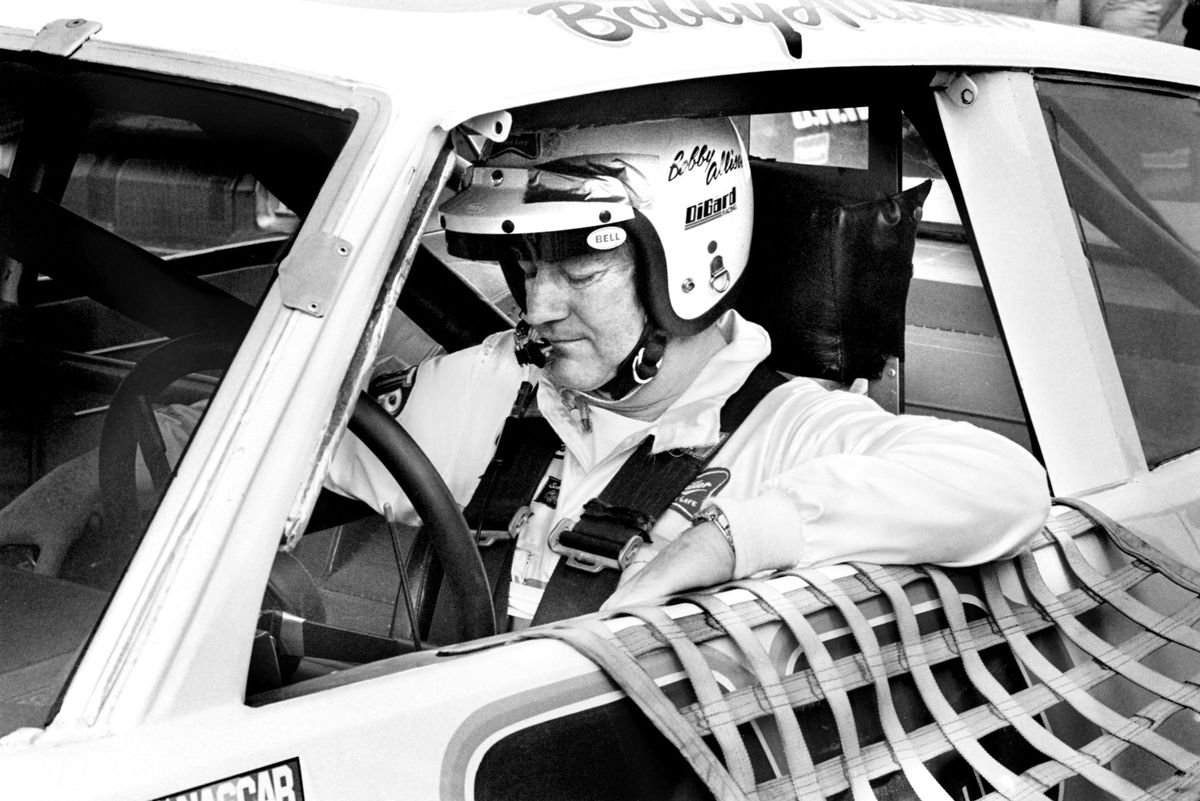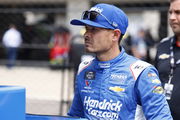
Getty
NASCAR driver Bobby Allison sits in his race car prior to the start of the 1982 Firecracker 400 stock car race at Daytona International Speedway in Daytona Beach, Florida.| Courtesy: Getty

Getty
NASCAR driver Bobby Allison sits in his race car prior to the start of the 1982 Firecracker 400 stock car race at Daytona International Speedway in Daytona Beach, Florida.| Courtesy: Getty
In the long and glorious history of NASCAR, a number of races hold great importance. While some races brought forth milestones for the sport, many others have given a new shape to NASCAR. The 1987 Winston 500 at Talladega is an example of the latter. The historic race was a story of two contrasting experiences of a father-son duo, Davey and Bobby Allison, and is the reason for introducing restrictor plate races in NASCAR.
Watch What’s Trending Now!
The qualifying session for the race was as historic as the race itself. Bill Elliott created a NASCAR record by reaching a speed of 212.809 mph and won the pole for the Winston 500. Bobby Allison qualified second and was roughly a mile-per-hour slower than Elliott with 211.797 mph. Allison overcame the difference on Sunday, as he led the race for a brief duration until one of the sport’s most violent and dangerous crashes triggered a red flag caution that lasted over two hours.
ADVERTISEMENT
Bobby Allison’s crash shed light on the need for a restrictor plate
In 1987, the restrictor plate was an alien concept to NASCAR drivers. Restrictor plates are necessary to limit the car’s power and help cars maintain their strength on larger racetracks. The Alabama International Motor Speedway, a 2.66-mile oval track, surely needed the vehicles to limit the power output. The remarkable speeds that Bill Elliott and Bobby Allison displayed in the qualifying races is also one of the reasons why.
For more context, Elliott’s outing still has a 33-year-old track record and is the fastest qualifying lap in Cup Series history. Racing in a Harry Melling Ford Thunderbird, Elliott started the race as the leader, with Bobby Allison and his son Davey right behind him.
It took Bobby’s Stavola Brothers Buick a short time to take over as the race leader as an intense battle ensued. However, in the 22nd lap, NASCAR changed forever. Bobby’s car blew his engine, lost a rear tire, and spun onto the track. Soon after, as it went over to the frontstretch, the car leaped into the air and trimmed 100 feet of catch fence. What followed was a red flag with more than two hours of repair and a traumatized scene by the trackside.
ADVERTISEMENT
ADVERTISEMENT
Upon the resumption of the Winston 500, it was No.9 driver Bill Elliott going against No.28 Ranier Racing driver Davey Allison. Davey’s car used a Robert Yates-built engine that could compete with Elliott’s for a prolonged period.
Elliott led the race for 48 laps, and following a valve failure after 150 laps, he was forced to retire from the race. This opened the path for Davey Allison to score his first victory in the top flight in his rookie season. Affirmed by his father’s safety, Davey overtook Dale Earnhardt with ten laps to go and cruised to a win on his home track.
ADVERTISEMENT
The race’s outcome attracted NASCAR’s immediate attention as it aimed to reduce the risk to a driver and ensure the audience’s safety. Had the crash been any worse, it could have been catastrophic for the sport.
Top Stories
Footage Surfaces of Florida Police Arresting NASCAR Veteran Over Disturbing Public Misbehavior

Denny Hamlin Demands Immediate Apology From FOX Broadcaster After Michael Jordan’s Lawsuit Triumph

Jeff Gordon’s Wife Ingrid Vandebosch Shares Tearful Message Amidst Major Family Announcement

Kyle Larson’s Sprint Car Rivals Threatens Criminal Action Against Track Owner Over $15,000 Winner’s Purse

Hailie Deegan & Others Speculated to Fill NASCAR Seat After Star Driver’s Ugly Exit

ADVERTISEMENT
NASCAR’s response to the 1987 Winston 500
Bobby Allison was extremely lucky to escape the crash without any injuries. However, NASCAR needed an immediate response as they couldn’t allow cars to get airborne, risking the driver’s life. In current times, drivers have been demanding an increase in horsepower for cars, a stark contrast to what the sport needed back then.
NASCAR dived deeper into the possibility of slowing cars down on oval tracks. As NASCAR arrived at Talladega for the track’s second race of 1987, the carburetors had drastically decreased in size. This meant that cars could not reproduce similar horsepower, and as a result, the speed was reduced. The discussion about the probable solutions to the problem continued for a long time.
Bobby Allison’s answer to being questioned about the insane speeds of the cars was intriguing. He replied with another question, “How fast is too fast?”
ADVERTISEMENT
In 1988, NASCAR finally brought restrictor plates into play. The restrictor plates reduced the air-fuel mixture flow into the engine, reducing horsepower output. As modifications to the car were being explored, Jack Roush chimed in and helped NASCAR develop roof flaps.
Roof flaps help the cars stay grounded when they spin at high speed. Since then, the roof flaps and restrictor plates have remained essential to NASCAR race cars.
Watch This Story: Toyota’s Bold Move With The New Camry XSE Takes on Ford’s Mustang Dark Horse
ADVERTISEMENT
ADVERTISEMENT
ADVERTISEMENT
ADVERTISEMENT

